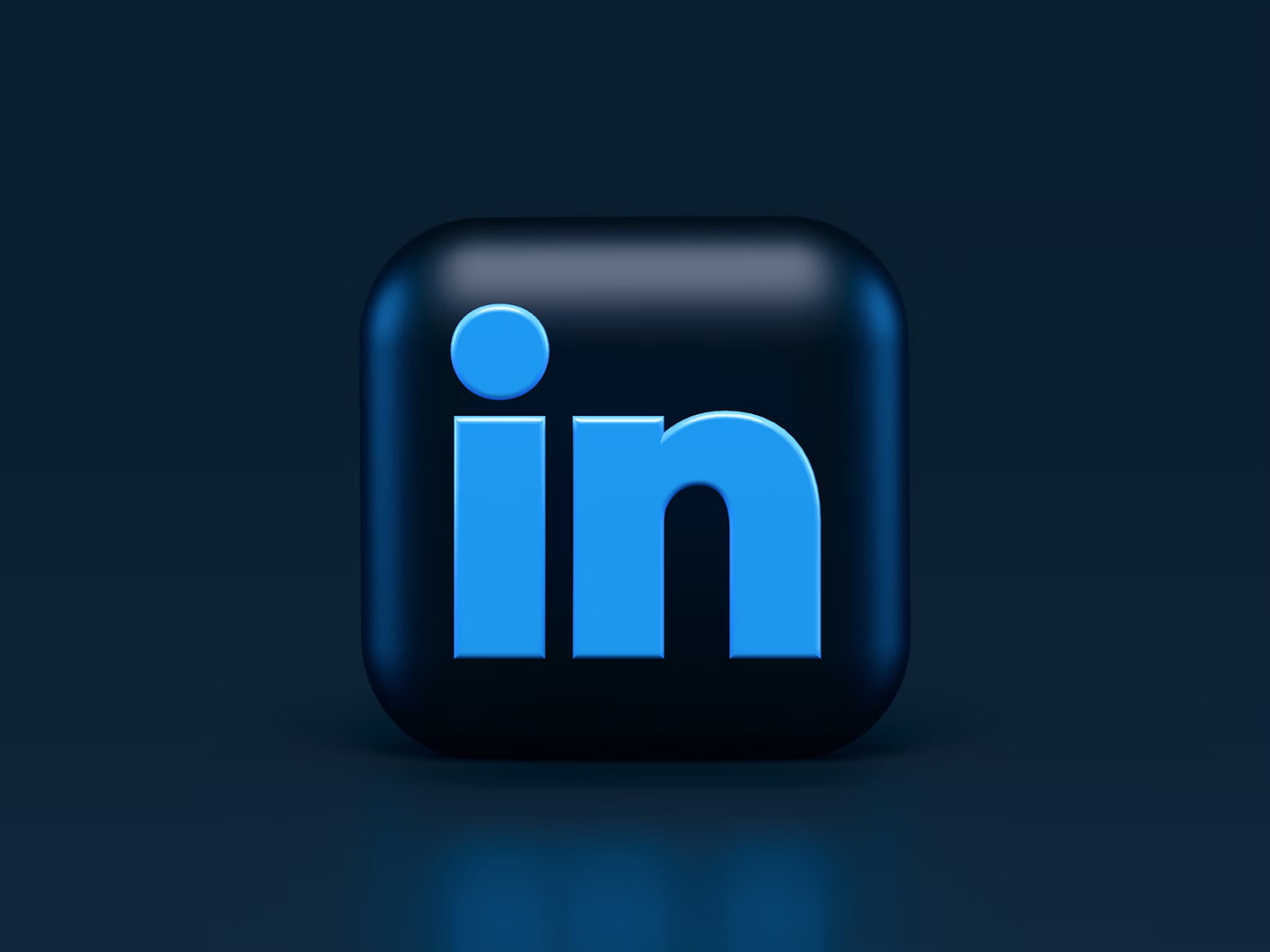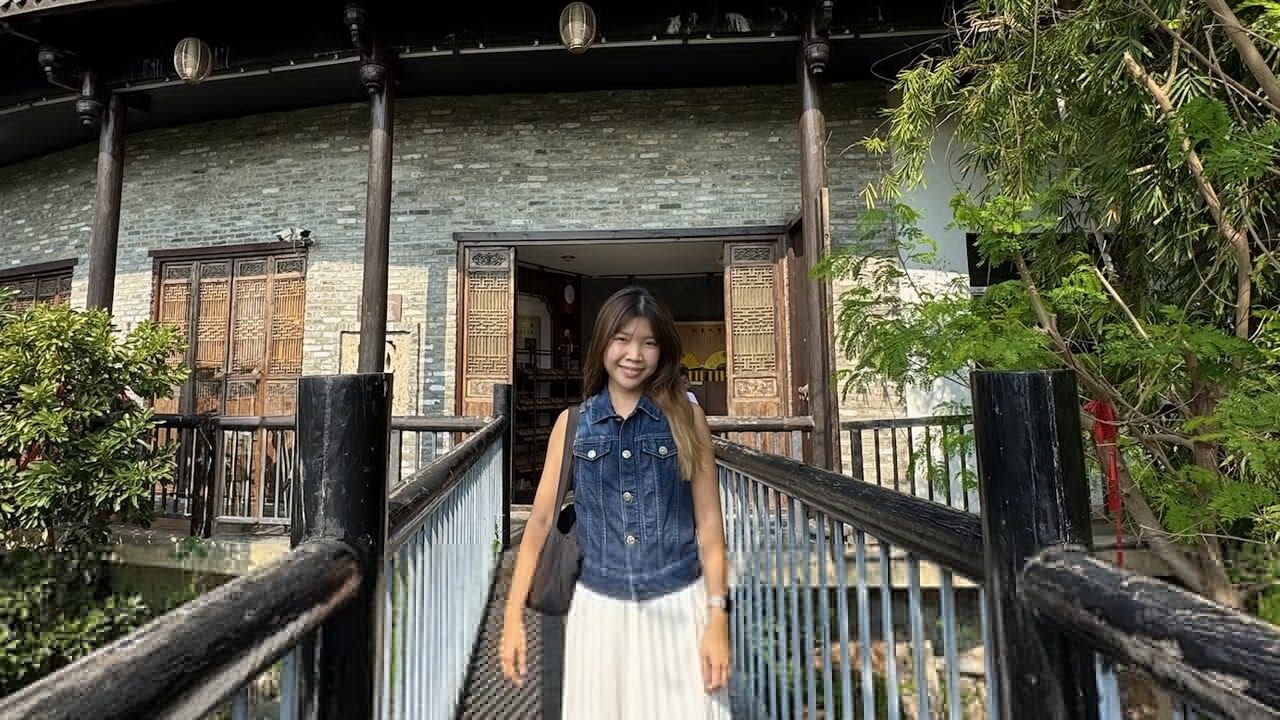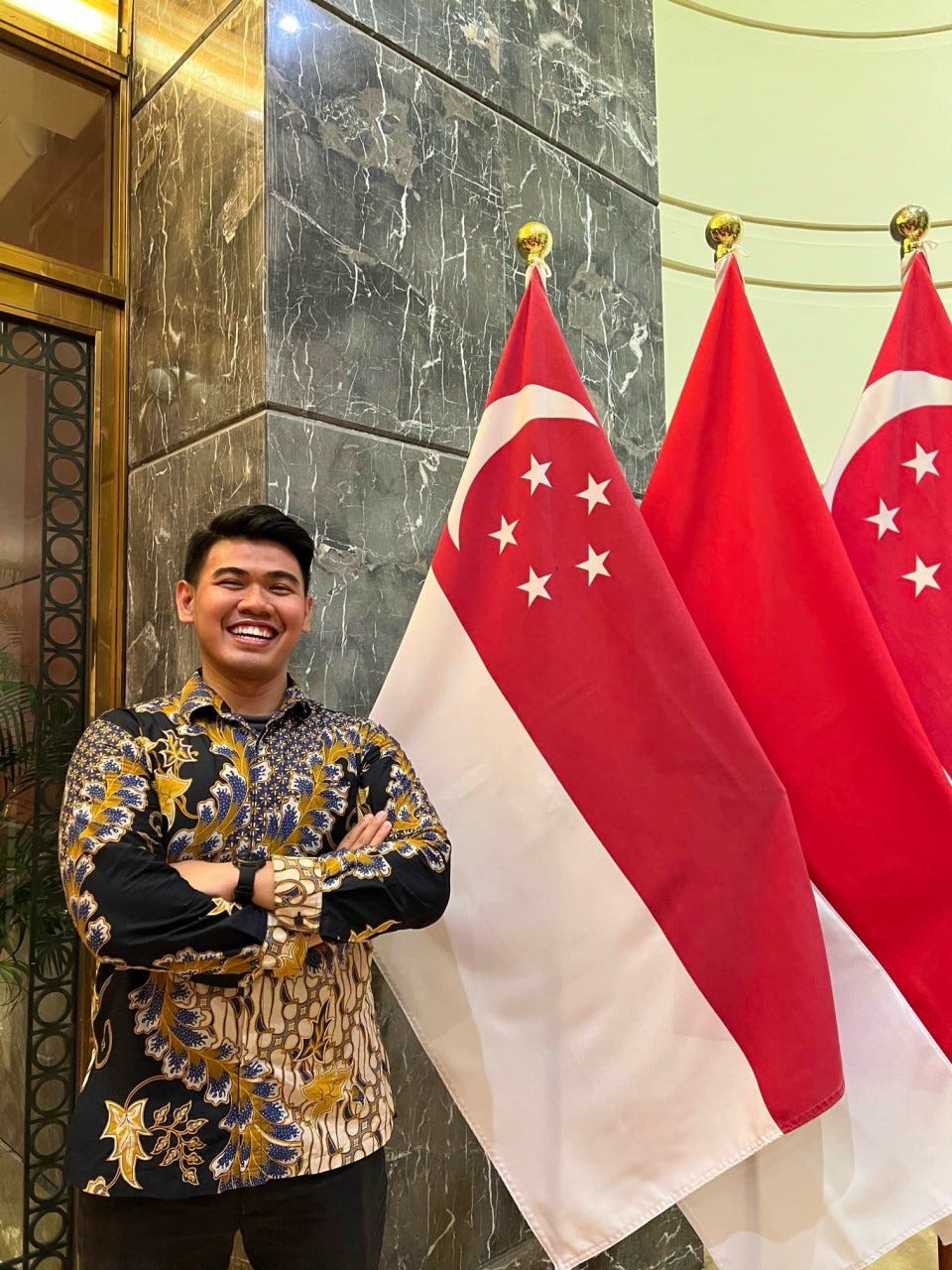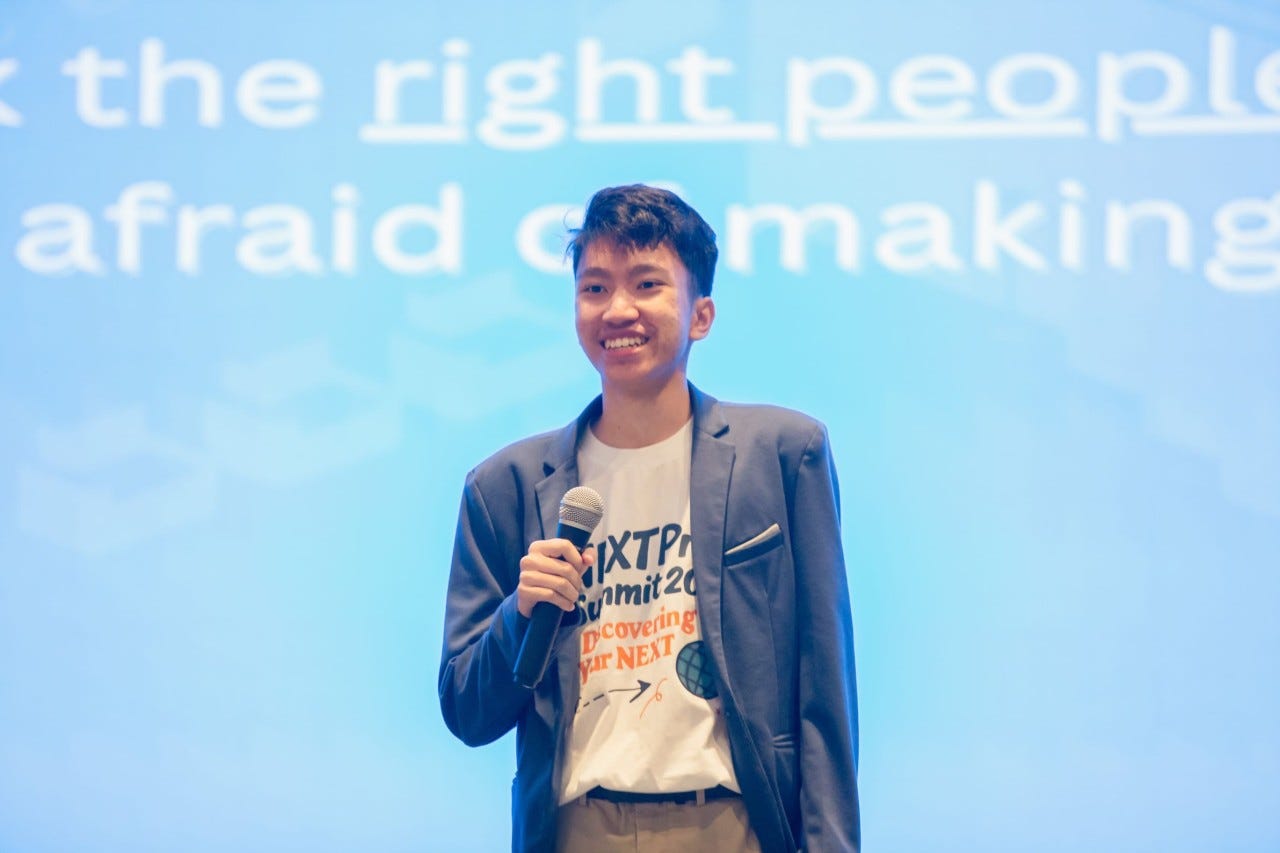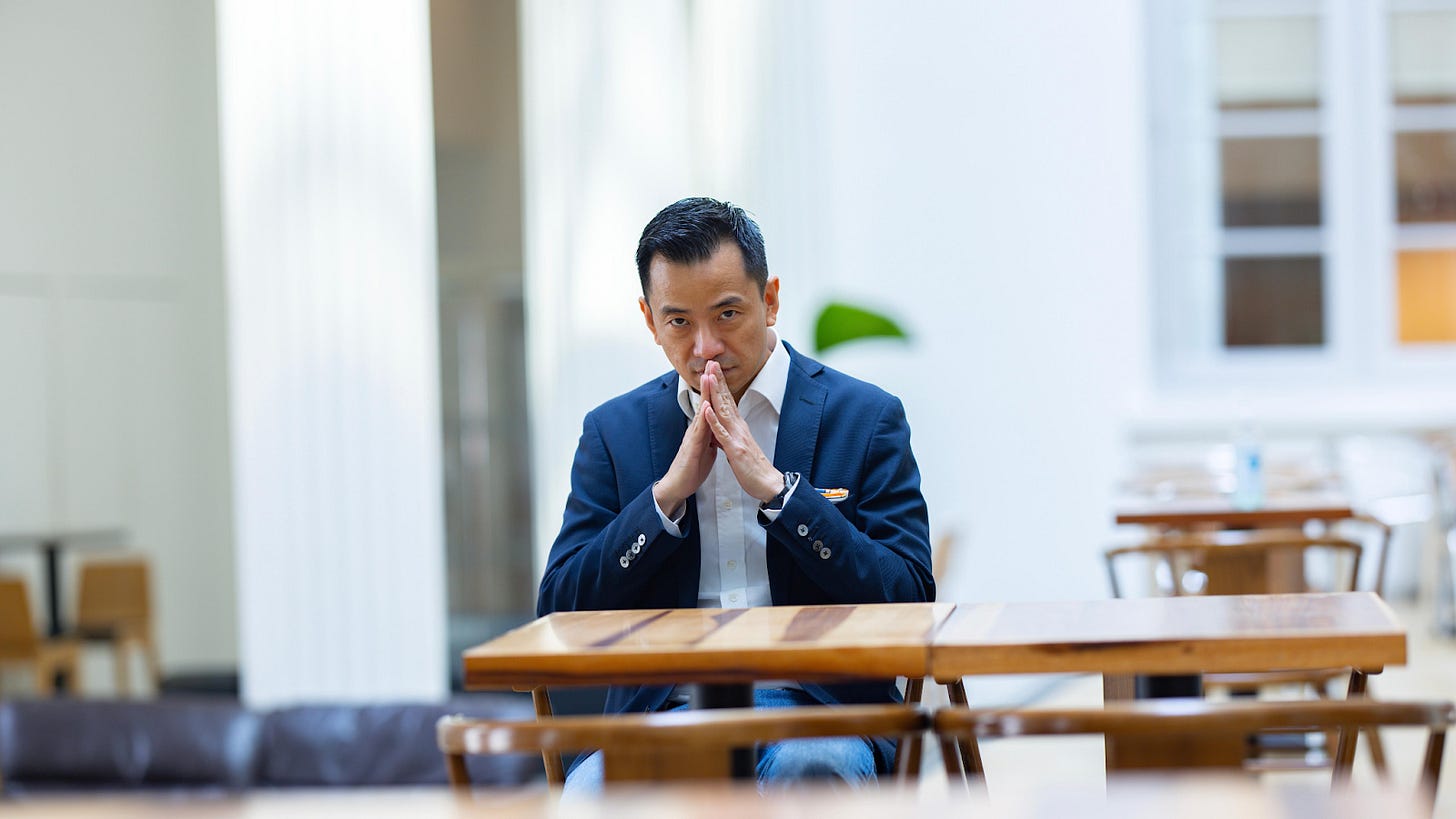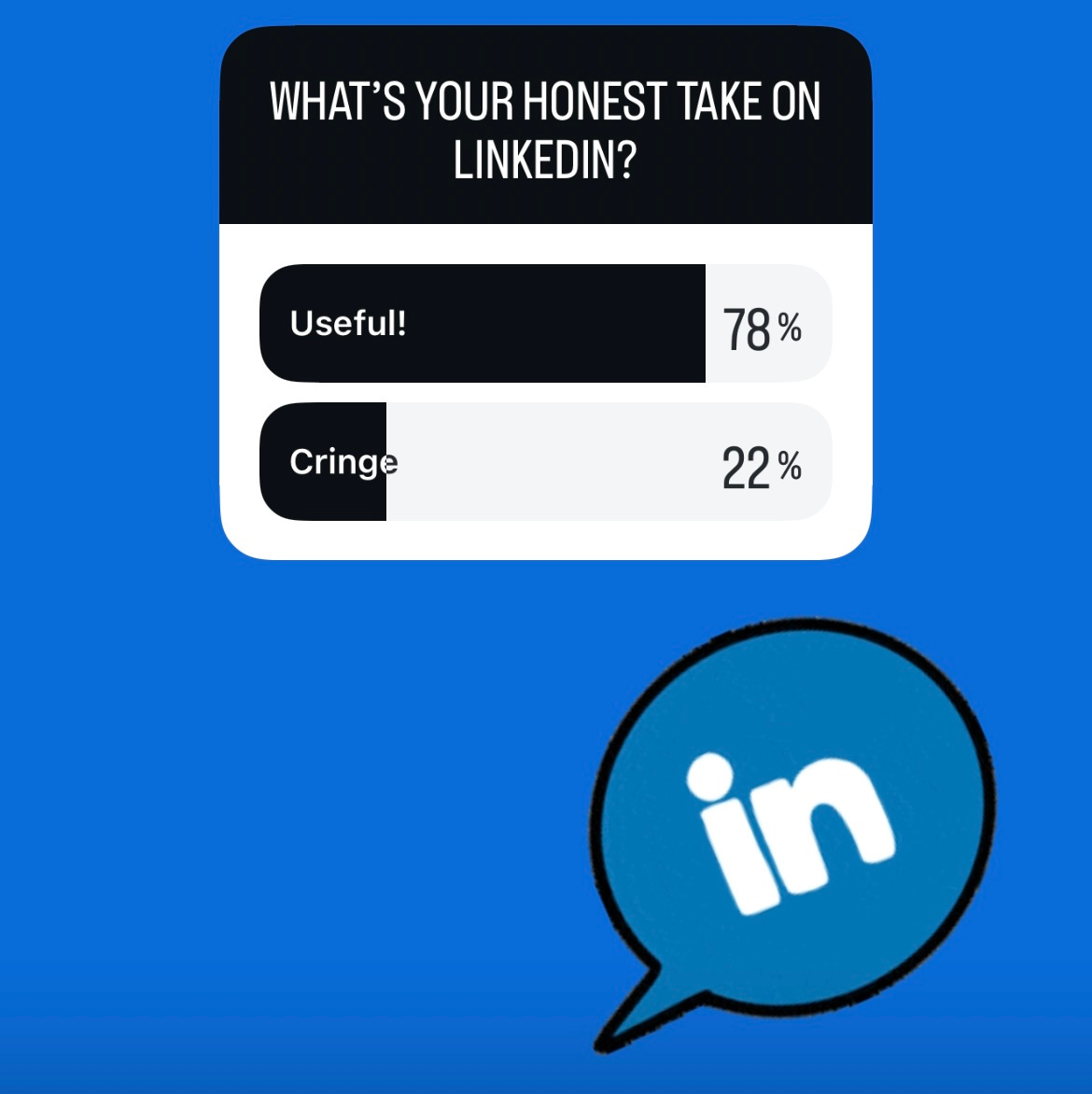#51: LinkedIn Is Cringey. Not For These Youths
Amidst a tough job market, young adults across Southeast Asia are showing up on LinkedIn to connect and create opportunities for themselves
Welcome to SEAmplified’s newsletter—where we share inspiring stories for you to rethink the grind & discover your why in Southeast Asia!
Reading time: 6 minutes
💼 Redefining Work
Exploring how Southeast Asian youths are rethinking success and hustles.📌 TL;DR
📌 A viral Singapore skit mocking “cringe” LinkedIn posts highlights how many youths view the platform.
📌 With a tough job market, Southeast Asians are rethinking LinkedIn as more than just an online résumé.
📌 Youths from Singapore, Indonesia, and Laos are using it to share values, build visibility, and connect early.
📌 LinkedIn coach Eric Sim says that the platform can become a tool for growth and opportunities, not just humblebrags, if done authentically.
*TL;DR generated by AI“I am excited to announce that I’ve finished my ice cream.”
Everyone claps. A few friends reply: “Fantastic news! Valuable insights!”
Another declares that she’s “embarking on a new chapter” by buying a new round of ice cream for everyone. More applause is heard.
“Nice work! I endorse this round!”
Finally, someone returns with two new scoops: “Big things are coming. Ice cream!”
“Congrats on the ice cream anniversary!”
This is not a corporate networking event. It is a parody of the exaggerated self-congratulatory messages and cringey comments on LinkedIn that were turned into a skit by a group of Gen Zs in Singapore.
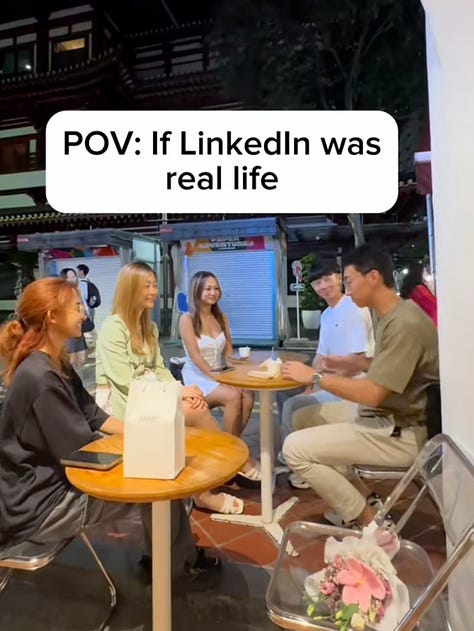

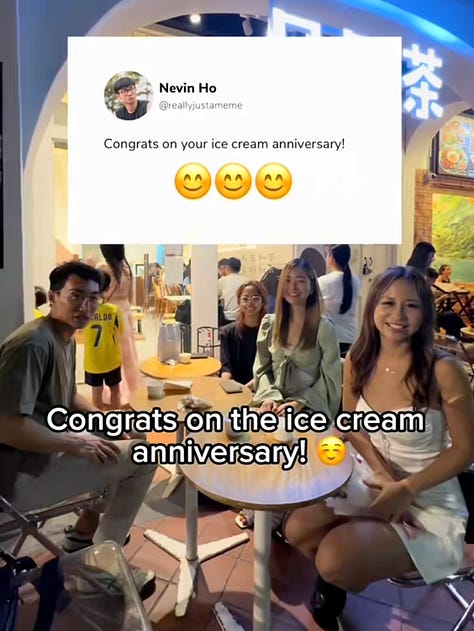
The skit went viral. Many youths resonated with the awkward, overly polished posts and profiles that are seen on the professional networking platform with over 60 million users in Southeast Asia.
But amidst a tighter job market where fresh graduates are facing hiring freezes and slower employment opportunities, LinkedIn has emerged as a space for youths to create their own opportunities.
With that, is LinkedIn just a cringey space for humblebrags, or are we missing the point? I spoke to a few youths across Southeast Asia to find out.
From Cringe To Connections
“I used to think that LinkedIn was just a platform for corporate humblebrags,” says Cherrell Ng, 26, content creator and founder of Gen Z marketing agency ForwdMedia from Singapore.
Cherrell was more active on platforms like Instagram and TikTok, and often felt out of place while scrolling her LinkedIn feed.
After learning about personal branding at a networking event for media professionals, she decided to start a 66-day writing challenge to document her professional journey while exploring the platform.
The connections that she’s made on the networking platform “surprised” her.
“People would reach out to me on LinkedIn saying they’ve seen my journey becoming a creator and starting my own business,” Cherrell says. “It warms my heart, and I learned that showing up consistently and authentically does make an impact.”
Habib Andrianus has also been surprised by the impact of LinkedIn on his journey. The 25-year-old Indonesian shares that he was approached by recruiters who saw his profile and posts on the platform.
“I was surprised,” he says. “I used to think that LinkedIn was just an online resume, but it turned out to be a real networking tool when used well.”
When I asked what got him onto LinkedIn, Habib revealed that he heeded the advice of his mentor to start using it to connect with professionals during his second year of undergraduate studies.
And he did not find the platform to be cringey. “I saw it as a tool for learning about people’s career journeys,” he says. “I’m interested in the stories behind the achievements of professionals, especially all the ups and downs that they’ve been through previously.”
The Teenagers Starting Young
Meanwhile, I noticed that teenagers are showing up on LinkedIn to explore opportunities and connect with professionals outside of school.
While no exact numbers exist for Southeast Asia, global data shows that about 28% of LinkedIn users are aged 18-24, suggesting a similarly significant youth presence in our region.
One of them is Thiradeth Khamhoung from Laos. The 18-year-old started a career assessment and planning platform with a group of friends after being inspired by business ideas on LinkedIn.
“LinkedIn has allowed me to test and validate my platform from industry professionals,” he says. “It has also enabled me to gain international perspectives.”
But Thiradeth wasn’t expecting this. LinkedIn is often viewed as a job-hunting platform in Laos, and he wouldn’t have discovered more about the platform if not for his foreign friend.
“My friend was taking on many exciting exchange trips, and I asked how he got these opportunities,” Tiradeth recalls. “It opened the door for me to LinkedIn.”
When asked if he found LinkedIn to be cringey, he disagrees.
“I actually found ‘LinkedInese’—a term coined by LinkedIn Top Voice and personal branding coach Juliana Chan to describe the humblebragging, overly polished writing styles seen on the platform—to be very funny and thought-provoking,” says Thiradeth.

From his perspective, LinkedIn is used by the Top 1% of professionals around the world. He follows entrepreneurs and thought leaders on the platform, which is rare exposure for youths in Laos.
He finds that most people are invested in building their personal brand, which enables professionals to learn from each other and recognize those who work hard.
Yet, Tiradeth notes that there are no LinkedIn influencers in Laos who could demonstrate how the platform can be used effectively.
“I feel that it’s about spreading awareness on how we can use LinkedIn for personal and professional growth,” he says.
Fellow teenager Delvix Tham, 17, also began to use LinkedIn in 2024 out of “personal curiosity”. The Singaporean junior college student calls it “professional Instagram”.
“I felt that LinkedIn is a good tool to network with more people and seniors from my school,” he says.
He believes that there’s actual value to be on LinkedIn early by learning from the reflective posts by professionals across the world, which is distinct from the lifestyle and entertainment content on other social media platforms.
I asked if he ever found the platform to be cringey. He brushed it off, saying that many avoid LinkedIn simply because “they don’t know how to use it properly”.
But what does it take to show up purposefully on the platform, especially when you’re just starting out and don’t have much experience to share?
Building a Purposeful Presence
Eric Sim, a former investment banker turned LinkedIn Top Voice, often hears youths say they’re not ready to build their presence on LinkedIn.
“Many hesitate to show up because they feel they lack experience compared to seasoned professionals,” he says. “But you don’t need years of work experience to add value. Share what you’re learning, reflect on your experiences, or ask thoughtful questions to experienced professionals.”
As the founder of professional coaching academy Institute of Life, Eric acknowledges that LinkedIn has seen its fair share of cringey and humblebragging content in recent years. Yet, he thinks that valuable and insightful content remains the platform’s greatest draw.
“The key is to train the algorithm by engaging with posts from people you find inspiring and unfollowing those whose content doesn’t add to you,” he suggests.
Eric also sees Gen Z reshaping what it means to be professional on LinkedIn—and in a positive way.
“They don’t feel the need to brag or conform to outdated corporate tones,” he notes. “Having grown up with social media, they understand what authenticity means and are more comfortable being real and vulnerable online.”
Eric points to Vanessa Ho, who began using LinkedIn as a university student and secured an internship through cold outreach, as an example of what’s possible.
“As more Gen Zs participate, LinkedIn will feel less cringey,” he says. “Their presence is making the platform more dynamic and grounded.”
And we might be starting to see that shift.
Turning LinkedIn Into Opportunity
In our poll on Instagram, 78% of respondents thought that LinkedIn is useful, while the rest called it cringe.
Perhaps the difference comes down to how people choose to show up.
Youths like Cherrell, Habib, Tiradeth, and Delvix chose to use LinkedIn with authenticity and curiosity. They share their stories, ask questions, and connect beyond borders—turning LinkedIn into a space for learning and growth.
For them, LinkedIn is a tool that helps them explore various possibilities in life. There is no need to overpolish our achievements or perform for virality. As Eric reminds us, people should focus on building meaningful connections instead of chasing likes or going viral.
At a time when the job market is tough, LinkedIn can be a passport to opportunities we never knew existed—only if we use it with curiosity and authenticity.
Enjoyed today’s article? Follow SEAmplified on Instagram, TikTok, and LinkedIn for more exciting and exclusive content, hit the subscribe button, and tell us how we did in the poll below!
Have a new idea or lead for a story, feedback on our work, or just want to say hi? Email us at hello@seamplified.com.



